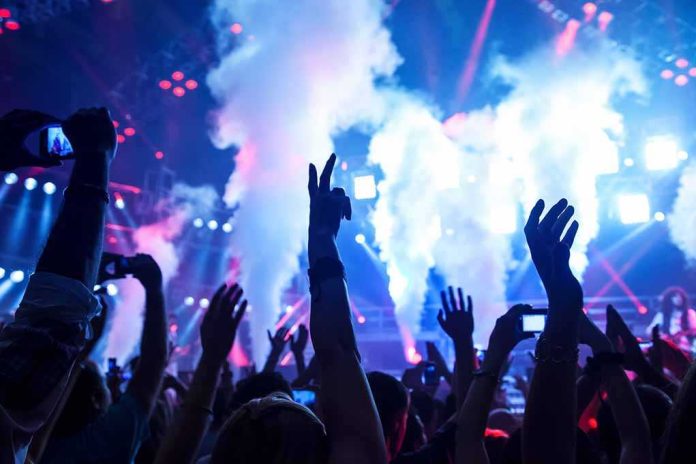
GWAR’s shocking performance at Riot Fest 2025, featuring the violent mock execution of Trump and Musk effigies, draws intense backlash amid a heated political climate.
Story Highlights
- GWAR staged mock executions of Trump and Musk at Riot Fest.
- The performance sparked debate over political rhetoric and art.
- Critics label the act as reckless amid rising political tensions.
- The event took place shortly after Charlie Kirk’s assassination.
GWAR’s Controversial Performance at Riot Fest
At the Riot Fest 2025 in Chicago, the metal band GWAR performed a theatrical stunt involving the staged beheading of an Elon Musk effigy and the disembowelment of a Donald Trump dummy. This act, characterized by its violent imagery, drew a mix of cheers and criticism from the audience and commentators. The performance, taking place soon after the assassination of conservative activist Charlie Kirk, has sparked discussions about the boundaries of artistic expression and the escalation of political rhetoric.
GWAR, known for their satirical and provocative performances, aimed to use shock value as a form of social commentary. However, in a climate already charged with political tensions, the act’s timing and symbolism have raised concerns among critics. The performance has been condemned by some as “grotesque and reckless,” with arguments suggesting it could normalize violence against real-life figures, especially given the recent assassination of Charlie Kirk by a leftist activist.
Impact and Public Reaction
The incident quickly went viral, with videos circulating on social media, further fueling the debate. Critics argue that such acts blur the line between satire and incitement, especially when real-world violence is still fresh in public memory. Despite the backlash, both GWAR and Riot Fest organizers have not released official statements addressing the controversy. The story remains a trending topic, highlighting the ongoing polarization in public discourse around art, politics, and free speech.
Riot Fest, known for its provocative lineup, now faces increased scrutiny over its programming choices. The festival’s reputation and future ticket sales may be impacted by this incident, as public and industry responses could lead to new regulations on violent political imagery in performances. The broader music festival industry may also need to reassess booking policies and artist guidelines to navigate the delicate balance between artistic freedom and public safety.
Debate Over Artistic Expression and Political Rhetoric
Music industry analysts note that GWAR’s act, while consistent with their brand, is riskier in today’s politically charged environment. Cultural critics emphasize the importance of contextualizing shock art to prevent it from inadvertently fueling real-world violence. This incident adds to the ongoing debate over the limits of artistic expression and the potential consequences of such performances in a deeply polarized society.
The debate extends beyond the music festival circuit, prompting discussions among legal experts and scholars of performance art. While the act is likely protected as free speech, the public outcry could lead to calls for stricter regulations. Supporters of the performance defend it as a critique of power, while opponents view it as irresponsible in the current climate. This divide underscores the challenges in balancing artistic freedom with societal concerns about political violence.
Sources:
“`













